#IoT Sensors
Text

"Experience seamless connectivity and efficiency with our comprehensive IoT solutions. Our tailored offerings empower businesses to harness the power of interconnected devices, enabling real-time data collection, analysis, and informed decision-making. Explore our range of IoT solutions designed to streamline operations, drive innovation, and elevate your business to new heights in the digital landscape." <a href="https://helixsense.com/iot-solutions/">IoT"Solutions </a>
0 notes
Text
Exploring the Future of IoT | Internet of Things
Internet of Things (IoT) has already transformed the way we perceive and interact with technology connecting everyday objects to the digital world. As we navigate through a rapidly evolving technological landscape it becomes crucial to delve deeper into the future of IoT and the endless possibilities it holds. Let’s explore the exciting advancements and emerging trends that will shape the future…
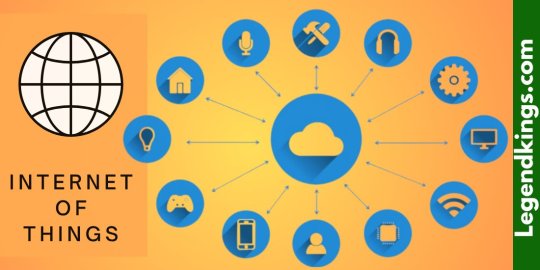
View On WordPress
#connected devices#Data Analytics#Emerging IoT Technologies#Future Technology#Industrial IoT#IoT Applications#IoT Automation#IoT Connectivity#IoT Data Privacy#IoT Ecosystem#IoT in Agriculture#IoT in Healthcare#IoT Industry Insights#IoT Infrastructure#IoT Innovations#IoT Security#IoT Sensors#IoT Sustainability#IoT Trends#Smart Homes
0 notes
Text
Prognostic Solutions in Steel Plant and Tube Mill Industry
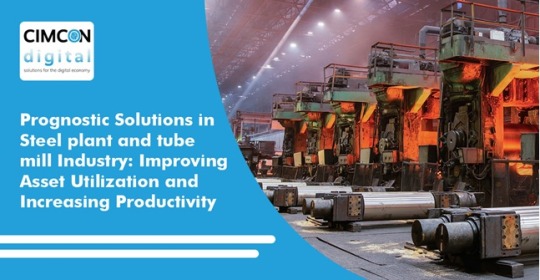
The global steel market reached a value of US$ 874.6 Billion in 2021. Looking forward, IMARC Group expects the market to reach a value of US$ 1,052.25 Billion by 2027, exhibiting a growth rate (CAGR) of 3.02% during 2022-2027. Significant growth in the automotive industry across the globe and Increasing oil & gas production owing to the transportation industry’s demand is creating a positive outlook for the market. But with growth comes a lot of challenges in the steel manufacturing process. Companies in the industry face major challenges with rapid digitalisation and unlocking potential in data, shifts in consumer demands, and the attraction of top talents.
To address these challenges and improve profitability, the largest integrated producer of engineering steels and specialized seamless tubes in the Asia Pacific region has the foresight to expand its market in the coming years. In recent years, the leadership team has placed a greater emphasis on better asset utilization and process optimization.
Steel Plant & Tube Mill Challenges:
Failure of AssetsComplex procedures and important resources are used to produce steel tubes. Production and product quality are both impacted by the unforeseen failure of assets. It is not practical to inspect equipment frequently due to the harsh steel mill environment and the risks that inspection of rotating equipment poses to operator safety.
Mills in poor condition
A poorly maintained mill costs valuable time and scrap during setup and operation. The mill must be dependable so that the operator is not chasing mechanical problems during normal operation and setup. A good maintenance program, as well as rebuilds or upgrades when necessary, is essential.
Tube mill misalignment, poor mill condition, and inaccurate setup account for 95% of all problems in tube production. Most mills should be aligned at least once a year.
Low investment in technologyOne of the major problems which these industries face is the lack of incorporation of advanced technologies in Research and Development work in production. The same is the case for other sectors of the industry and has been the case for decades. One of the outcomes has been the relative unattractiveness of the sector vis-a-vis others among young engineers. With little research being done by the government or the private sector, Industries lack effective implementation of Industry 4.0 and technologies that can reduce risks and helps to cut overall production cost.
Process monitoringSteel mills’ inspection and monitoring process usually follow specific procedures, requiring that workers operate in a typical analog way. Since it is a critical environment, stopping production to execute corrective actions is unfeasible, and the current method for monitoring these problems is not able to predict failures in the same way as intelligent predictive models do, thus demonstrating an inevitable gap to errors.
Lack of Talent and TrainingEven though the operators are skilled and trained to operate in tube mills, there are still some challenges and issues that they need to face every day. Tube mill owners should arrange training sessions on how to troubleshoot the problem and figure out what was causing the problem. If these problems are not addressed properly, aluminum fabrication, steel fabrication, or stainless-steel fabrication processes won’t have precise tubes and pipes to work with.
MaintenanceBesides the difficulty in performing the inspection itself because of the hostile environment of steel industries, the maintenance of the encountered problems is also difficult.
The corrosion of equipment and structures is also a common problem in these industries and the maintenance of these components is very complicated because of the hostile environment, as mentioned before. Besides, the diversity of complex processes in this industry also makes it difficult to understand the extracted data in the operation, and the improper management of this information in diffuse systems compromises the maintenance of the structures.
Because of this lack of precise management tools, failure prediction in the operation is not usually achievable, leading to unplanned shutdowns and the extensive use of corrective maintenance methods.
Our Solution:
With the advent of Industry 4.0, predictive maintenance has gained huge popularity in maintaining machine health. Predictive maintenance is aimed at reducing costly and unplanned downtimes and offers organizations to plan maintenance schedules in advance for increased efficiency. According to McKinsey, predictive maintenance typically reduces machine downtime by 30% to 50% and increases machine life by 20% to 40%.

CIMCON Digital’s VIBit is an intelligent, powerful, and compact sensor that monitors the conditions of machines or equipment and predicts their failures in advance using the latest AI/ML Technologies to avoid unplanned downtime saving time and money for the owners.
We set up VIBit, a platform for detecting and diagnosing machine anomalies so that we could track the real-time performance of crucial machinery and processes throughout the year. VIBit Tri-axial vibration, Temp, and audio sensors installed on rotary equipment transmit machine health data over Plant’s Wi-Fi. AI/ML algorithms on the edge platform provide early machine anomaly detection along with diagnostics and recommendations for corrective and preventive action.
It can be used in Steel Tube Plant Asset and Fault Diagnostics to identify faults like bearing failure, misalignment, and electrical faults in types of equipment like De-scalar: motor/pump, Fume extraction system: motor/pump, etc.
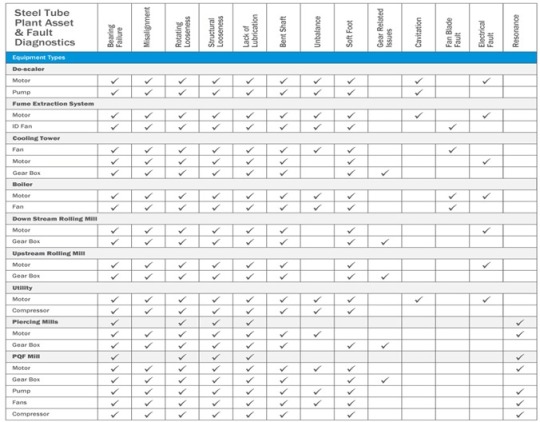
Benefits of setting up a VIBit:
Real-time monitoring of critical equipment’s health on a single dashboard.
Prioritize and plan maintenance action before catastrophic failure.
Reduce the risk of operator safety with remote monitoring.
Reduce planned downtime and eliminate unplanned downtime.
Reduce process and quality-related issues.
Increase equipment efficiency and reduce carbon emissions.
In conclusion, the steel and metal industries are undergoing significant changes and it is important for manufacturers to adopt technologies that can assist in reducing manual labour, leveraging data, and improving asset health. By embracing the latest technological advances, steel and metal manufacturers can use predictive analytics to anticipate failures and proactively take action to reduce unplanned downtime and improve plant efficiency.
#Steel Industry#Metal Industry#Steel Manufacturing#Predictive Maintenance#IoT#Digital Transformation#Smart Manufacturing#IoT sensors#Industrial IoT solutions#Unplanned Downtime in Manufacturing#net zero sustainability#Factory 4.0
0 notes
Text
USAGE OF IOT SENSORS NETWORK IN HEALTHCARE
What are IoT sensors?
The Internet of Things in healthcare is one of the most important and promising technologies today and sensors play an important role in it. A device that is capable of detecting changes in an environment, a sensor can monitor our health status, air quality, home security and many other things.
These health sensors for IoT technologies have found their way into medical gadgets. Despite the concept being a relatively new one, it’s already closely entangled with healthcare. So much that it has a commonly coined term for it- “Internet of Medical Things”.
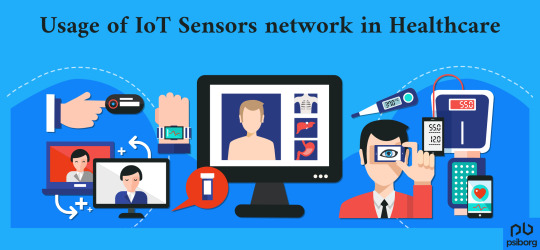
What are the benefits of IoT in healthcare?
IoT is nothing short of a revolution in the field of healthcare. There are four primary applications of IoT in healthcare-
Hospital Infrastructure
IoT is incorporated into HVAC (Heating, Ventilation, and Air Conditioning), lighting, electrical demand, people movement and safety in building systems. Using smart devices helps the facility operators ensure patient safety and optimizes their experience. Additionally, it also helps them in energy consumption and provides them with detailed financial information.
For example, the smart light fixtures embedded with sensors can provide optimized lighting according to the patient’s satisfaction and at the same time control energy consumption by providing lighting only at the places where it’s needed.
Patient Experience
As for patient experience, IoT healthcare sensors provide real-time location services to track patients and assets for treatment and safety. Like, an Alzheimer’s patient wears a geo-spatial location badge that can track their location at all times. Now if they wander out of the hospital’s geo-fence, an alarm sets off to notify the staff immediately.
Critical Environment
Health officials can also track and monitor the equipment in the operating rooms, control multiple aspects like the temperature, humidity, pressure, air exchanges, etc. They can also detect volatile organic compounds in the air like escaped anesthetic gases.
Maintenance
With IoT applications in healthcare, predictive maintenance is on the rise, replacing preventive maintenance. Preventive maintenance includes regular maintenance scheduled by the manufacturers whereas predictive maintenance is done only when something needs to be worked on. This way the maintenance process is made more dramatic and effective.
What sensors are used in health care?
Listed below are some of the smart health monitoring systems using IoT-
Remote Patient Monitoring
Continuous Glucose Monitor (CGM) is a device that is the size of a penny which can monitor the blood glucose level non-stop once inserted into the patient’s arm. Such devices can bring huge value to the research and treatment of diabetics starting from providing remote diabetes treatment solutions. The monitored data can be easily accessed via smartphones.
Ingestible Sensors
In 2003 WHO found out that 50% of prescribed medicines aren’t taken the right way or are completely ignored. A smart way of resolving this problem using IoT is developed by Proteus. They have come up with ingestible sensors. These tiny sensors send a signal to the receiving device upon dissolution in the stomach. An amazing creation, this “smart pill” helps reduce the rate of incorrect, senseless consumption of important drug prescriptions.
Mobile Health
Mobile health, also sometimes known as mHealth, is a way of watching one’s health via smartphones. It can truly be a life saver for modern patients, all of whom use smartphones regularly. There are apps that can be used as full-blown healthcare hubs where you can access valuable medical information, analyze your health trends, manage body-inserted IoT sensors and even contact a doctor with a single tap. Smart healthcare is the future.
Smart Hospitals
Hospitals today have become these huge infrastructures with loads of paperwork, long frustrating lines along with overworked doctors and nurses. All these situations can be turned around by implementation of IoT solutions. Long, cumbersome paper registers can be replaced by automated and centralized databases, a single management system can receive the submissions, help control long queues and track the staff through their smartphones. Such innovations and technology in medicine can help reduce the hospital costs, save paper and can make lives of both patients and the hospital staff easier.
Enhanced Chronic Disease Treatment
To effectively detect chronic diseases, health issues need to be monitored and analyzed over a long period. With IoT-powered wearables, sensors and data analysis, this becomes easier and more efficient. With the data collected from these sensors integrated with blockchain and AI can help discover underlying chronic diseases.
How are IoT sensors used in Healthcare?
The sensors collect data from the patients or a doctor/ nurse manually inputs the data.
The data is then analyzed by an IoT device with the help of AI-driven algorithms.
The device then makes a decision to either send the data to the cloud or act upon it.
Doctors are then enabled to make informed decisions based on the data provided by the IoT devices.
Future of IoT in healthcare
There is no doubt that the IoT based healthcare system is the future but it also needs data, high-speed communication and proper security to do so.
IoT Healthcare devices represent the fastest-growing sectors of the IoT market, and with 5G ultra-low latency speed and mobility will be provided.
IoT is already used a great deal in healthcare devices. It is only a matter of time when healthcare and IoT technologies become inseparable and will completely transform the way we approach healthcare.
A brief description of what we do at PsiBorg,
We are a group of young and active electronics design engineers, firmware and software developers that work together to build near-perfect goods in every way.
We have developed a wide range of home automation apps and security systems for our clients; if you are searching for a team to help you turn your concept into a product, you have come to the correct spot.
1 note
·
View note
Text
How to Choose the Right IoT Sensors Manufacturers
IoT technology is becoming more popular and has proven to provide unparalleled opportunities to all sizes of businesses. With the IoT or Internet of Things, businesses are stepping into a world where company operations are done remotely and in real-time. #IoTsensors and devices are helping businesses to save on warehouse operations and manage other tasks efficiently. Read for more - https://www.itsmypost.com/how-to-select-a-gps-tracking-device/
0 notes
Link
#manufacturing#iot#iot solutions#iot software development company#IoT Services#IoT sensors#iot devices#iot development company#iot in manufacturing#smart manufacturing trends
1 note
·
View note
Text
Internet of Things | Quantum Leap of 21st Century
IoT is next-level % thinking which aims to deploy internet technology beyond smart phones and laptops. Understand how IOT works. There’s no doubt that internet is a revolutionary breakthrough in the modern world. And it has made a great impact on our lives. It has now become the primary ingredient for humans to survive.
#Understand how IOT works#IOT sensors#Supply Chain Management#IOT Development#Technological Innovations
1 note
·
View note
Text
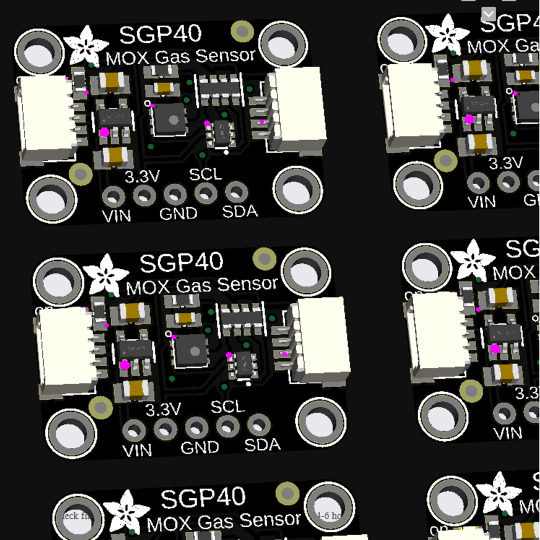

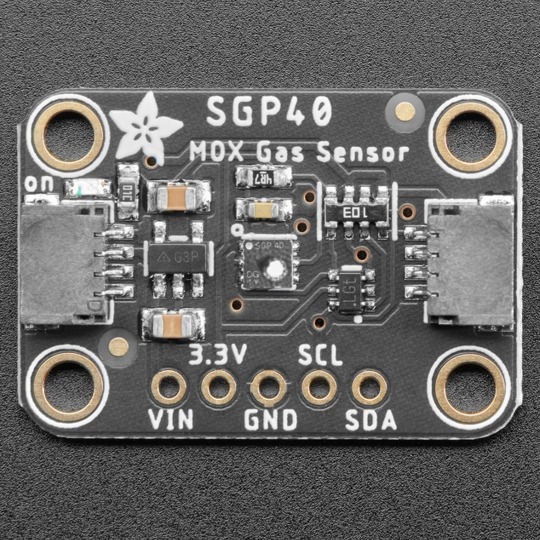

PCB of the day! SGP40 Air Quality Sensor Breakout - VOC Index - STEMMA QT / Qwiic 👃🥛🌬️
sniff sniff … do you smell that? You no longer need to stick your nose into a carton of milk; you can build a digital nose with the SGP40 Multi-Pixel Gas Sensor, a fully integrated MOX gas sensor. This is an excellent air quality sensor from the sensor experts at Sensirion, with I2C interfacing, so you don't have to manage the heater and analog reading of a MOX sensor. It combines multiple metal-oxide sensing and heating elements on one chip to provide more detailed air quality signals.
#sensirion#airquality#sensor#SGP40#adafruit#electronics#opensource#opensourcehardware#mox#digitalnose#vocindex#gasdetection#stemmaqt#qwiic#techinnovation#environmentaltech#smartsensors#iot#cleanairtech#pcb of the day#pcb
9 notes
·
View notes
Text
Smart Helmet Tracker with Sensors for Construction Accident Prevention
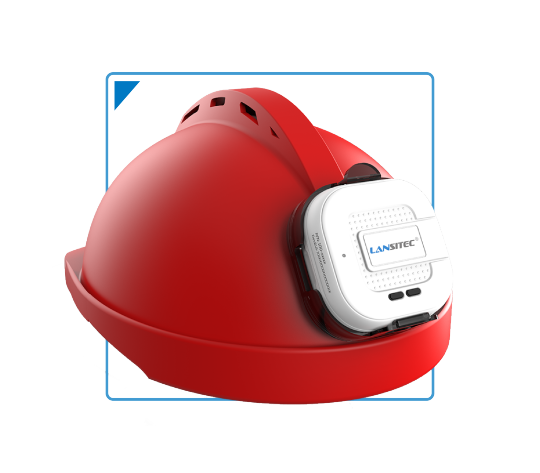
Construction-specific smart helmets use a variety of sensors, including temperature sensors, GPS, gyroscopes, accelerometers, and more. These sensors keep an eye on the wearer's vital signs, head movements, and surroundings all the time. In order to enable proactive accident prevention, the gathered data is processed in real time to deliver quick insights and early alerts. Lansitec Helmet Sensor is designed based on GNSS, Bluetooth5.0 and LoRa technology. It supports indoor and outdoor tracking. It supports various features which contribute to easy management in industrial settings.
For More:
#technology#lansitec#iot#lora#lorawan#asset management#Helmet Tracker#Helmet Sensor#Bluetooth#Sensor
2 notes
·
View notes
Text
youtube
Nexperia Energy Harvesting MPPT Technology Explained
https://www.futureelectronics.com/m/nexperia. Nexperia's Energy Harvesting PMIC uses the advanced Maximum Power Point Tracking (MPPT) algorithm to harvest energy for ultra-low power IoT sensors/nodes. MPPT uses an embedded hill-climbing algorithm to deliver the maximum power to the load. https://youtu.be/yWnLrX9O7qg
#MPPT#Nexperia#Energy Harvesting#PMIC#Maximum Power Point Tracking#ultra-low power IoT sensors/nodes#IoT sensors/nodes#MPPT circuit#maximum power point#Nexperia Energy Harvesting#Nexperia PMIC#Youtube
2 notes
·
View notes
Text

Empowering the Future: Cutting-Edge IoT Solutions for a Connected World
HelixSense offers innovative IoT solutions, seamlessly integrating smart devices to optimize operations across industries. Our cutting-edge technology harnesses the power of the Internet of Things, enabling real-time data insights and efficient automation. Elevate your business with HelixSense's tailored IoT solutions for enhanced connectivity and productivity.
0 notes
Text
American democracy could be far more effective through the technocratic toolkit being deployed around the world in better-run countries. There are three things that the best governments do well: Respond efficiently to citizens' needs and preferences, learn from international experience in devising policies, and use data and scenarios for long term planning. If done right, such governments marry the democratic inclusiveness with the effectiveness of technocratic management. The ideal type of government that results is what I call a 'direct technocracy'.
- Parag Khanna (Technocracy in America, Createspace, pg. 52, 2017)
#globalism#technocracy#scientific-dictatorship#smart grid infrastructure#IoT#5G#high speed trains#cameras#sensors#surveillance#public private partnership (ppp)#foreign policy#smart city construction#artificial intelligence#trade infrastructure#one belt one road#technocratic management#trade agreements#literature#internationalism#one world government#nwo
16 notes
·
View notes
Text
youtube
VIBit - State of the Art Intelligent Vibration-Based Predictive & Prescriptive Maintenance Solution
CIMCON Digital’s VIBit is an intelligent, powerful, and compact sensor that monitors the conditions of machines or equipment and predicts their failures in advance using the latest AI/ML Technologies to avoid unplanned downtime saving time and money for the owners.
Machine Anomaly Detection and Diagnostics Solution:
Our Cloud-based Health Management platform is a powerful tool for reducing maintenance spending and increasing Mean Time Between Repairs (MTBR) by proactively identifying detrimental system conditions prior to catastrophic machine failure by using an Artificial Intelligence/Machine Learning (AI/ML) model to provide FFT graph analysis, asset health monitoring, real-time data, and historial data. It provides a dashboard that helps you understand the overall equipment efficiency of assets in the form of waveforms. This further reduces unplanned downtime, increases equipment availability, and significantly reduces inventory costs.
Benefits:
Decrease Downtime
Eliminates Human Error
Reduced Service Costs
Improved safety
#Steel Industry#Metal Industry#Steel Manufacturing#Predictive Maintenance#IoT#Digital Transformation#Smart Manufacturing#IoT sensors#Industrial IoT solutions#Unplanned Downtime in Manufacturing#net zero sustainability#Factory 4.0#Youtube
1 note
·
View note
Text
LPWAN AND SENSOR DEVICES — HOW DO THEY COME TOGETHER?
WHO ARE LPWAN?
A low-power wide-area network, or LPWAN, is a kind of wireless wide-area network created to enable long-distance communications at a low bit rate among things (connected items), including sensors run on a battery. A Low-Power Wide-Area Network is a wireless wide area network that caters largely to low-power devices (LPWAN). The Wireless Sensor Network uses LPWAN for the sensor devices’ communication.
THE MOST POPULAR LPWAN TECHNOLOGIES
SUB-1 GHZ
NBIOT
ZIGBEE
LORAWAN
LTE CAT-M1 OR LTE-M
SIGFOX
LPWAN-BASED WIRELESS SENSOR NETWORK (WSN)
A group of autonomous, scattered devices known as a Wireless Sensor Network (WSN) employs sensors to keep an eye on its surroundings. The sensor nodes utilised in WSN systems are integrated with the onboard controllers. The whole circuitry primarily regulates and oversees operation. The complex data processing carried out at the base station known as the Gateway, which is connected to everything, takes place there.
The majority of the dispersed sensor nodes in a WSN are connected by LPWAN, and they all interact with the gateway.

LPWAN SENSOR DEVICE COMMUNICATION STRUCTURE
A wireless sensor node is furnished with power supplies, radio transceivers, and sensing and processing equipment. A wireless sensor network (WSNindividual )’s nodes are intrinsically resource-restricted because of their confined processing power, storage space, and communication bandwidth. Radio transmissions are used by the sensor nodes to communicate among themselves.
After being installed, the sensor nodes are in charge of self-organizing a suitable network architecture and often communicating with them across several hops. The integrated sensors then start gathering important data.
In order to carry out certain instructions or offer sensing, wireless sensor devices further reply to inquiries issued from a control site or the gateway.
WHAT DOES AN LPWAN GATEWAY UNIT DO? HOW DO SENSOR APPLICATIONS CONNECT TO AN LPWAN GATEWAY?
The Gateway serves as a conduit between the cloud and the WSN or other networks. This makes it possible for data to be stored and processed by equipment with higher power on a gateway unit, a distant server.
Both edge computing and cloud computing are crucial to IoT applications.
A gateway, also known as an edge gateway, is a device that enables network administration (control) and combines data from nodes to provide real-time or almost real-time data to a user platform. The user may operate and monitor the WSN locally when the gateway is linked to a nearby laptop. The gateway may be remotely managed and can transfer data to the cloud by connecting a cellular modem (which supports LTE, NBIoT, LTE-catM1, etc.) or an Internet modem (which supports wifi).
The gateway is crucial since it manages the WSN’s sleeping protocol as well as its communication component. The gateway wakes up nodes at a specific time, exchanges data with them, and then sends them back to sleep. WSNs must sleep in order to conserve power. Typically, a sensor node will sleep 90% of the time.
The management of device connectivity, processing, protocol translation, data filtering, security, etc. is handled by IoT gateways. By processing data, some of the more recent gateways also serve as platforms for application code.
LPWAN CLOUD TRANSMISSION OF COLLECTED SENSOR DATA
IoT Gateway devices are situated where LPWAN-connected sensor nodes and cloud-based IoT device nodes meet. The cloud will receive the data sent by wireless sensor networks and other IoT devices after it has been transferred through gateways. After being stored in the cloud, the received data is subsequently made available to consumers as a service.
A completely managed service from Google called Cloud IoT Core makes it simple and safe to connect to, control, and ingest data from millions of widely scattered devices.
MQTT and HTTP are the two protocols that Cloud IoT Core supports for connecting to and communicating with devices. Using either the MQTT bridge or the HTTP bridge, devices connect to Cloud IoT Core. One of the main elements of the Cloud IoT Core is the MQTT/HTTP bridge.
You may choose to activate MQTT, HTTP, or both protocols when creating a device registry.
MQTT is a widely used publish/subscribe protocol that is supported by embedded hardware and used regularly in machine-to-machine communications.
Since HTTP is a “connectionless” protocol, devices using the HTTP bridge don’t keep a connection to Cloud IoT Core open. Rather, they make requests and get answers. Only HTTP 1.1 is supported by Cloud IoT Core.
A MOBILE APP OR IOT DASHBOARD FOR Analysis and visualisation DATA COLLECTED FROM SENSOR DEVICES
The data produced by IoT devices is examined in relation to time. After processing, the timestamp data is uploaded to the cloud storage of the IoT devices, where it creates a database. IoT Dashboard generates data visualisations for users by reading data from the database.
Only if the IoT Dashboard can load data quickly and generate visuals from the database is it said to be useful. By combining the data (which is gathered through remotely dispersed smart devices) with its own database, certain IoT web apps give customers an enhanced experience.
CONCLUSION
Key technologies for LPWA applications that have already enabled several million connected devices include CAT-M, NB-IoT, Sigfox, and LoRa. It might be difficult to choose the best technology in markets that are competitive.
Unlicensed LPWAN is ideal for industrial, warehouse, and agricultural applications whereas licensed LPWAN is better suited for regions where adequate mobile networks have been widely deployed.
Early market entrants Lora and Sigfox progressively took the lead in terms of cost per unit and battery life, whereas NB-IoT is still in development and has not yet seen widespread use and testing. However, CAT-M has carved out a special space for itself and, because to its support for a greater data rate, has encountered fewer difficulties in this market.
Also read: A comparison between LTE-M and NBIoT
What PsiBorg does
A remarkable technology that is revolutionising IoT device connectivity is LPWAN technology. PsiBorg can assist you if your project calls for the use of LPWAN technology.
We are a group of seasoned engineers with in-depth understanding of integrating several LPWAN technologies in Internet of Things sensor networks, and we used tremendous imagination and invention to design the related Best IoT dashboard. Get in touch with us right now for further details.
This article was originally published here: HOW DOES SENSOR DEVICES COMMUNICATE ON LPWAN ?
1 note
·
View note
Text
youtube
Bosch Barometric Pressure Sensor BMP581 from Bosch Sensortec
https://www.futureelectronics.com/resources/featured-products/bosch-sensortec-environmental-sensors. The Bosch Barometric Pressure Sensor BMP581 is the new benchmark in the field of barometric pressure sensors and impresses with its enormous accuracy. This enables endless and new use cases such as fitness tracking where accurate altitude change is key. https://youtu.be/prMgNQ1Jd-8
#Bosch Barometric Pressure Sensor#Bosch#Barometric Pressure Sensor#BMP581#Bosch Sensortec#Bosch BMP581#Barometric Pressure Sensor BMP581#fitness tracking#altitude#GPS modules#wearables#hearables#smart home#IoT#Youtube
5 notes
·
View notes